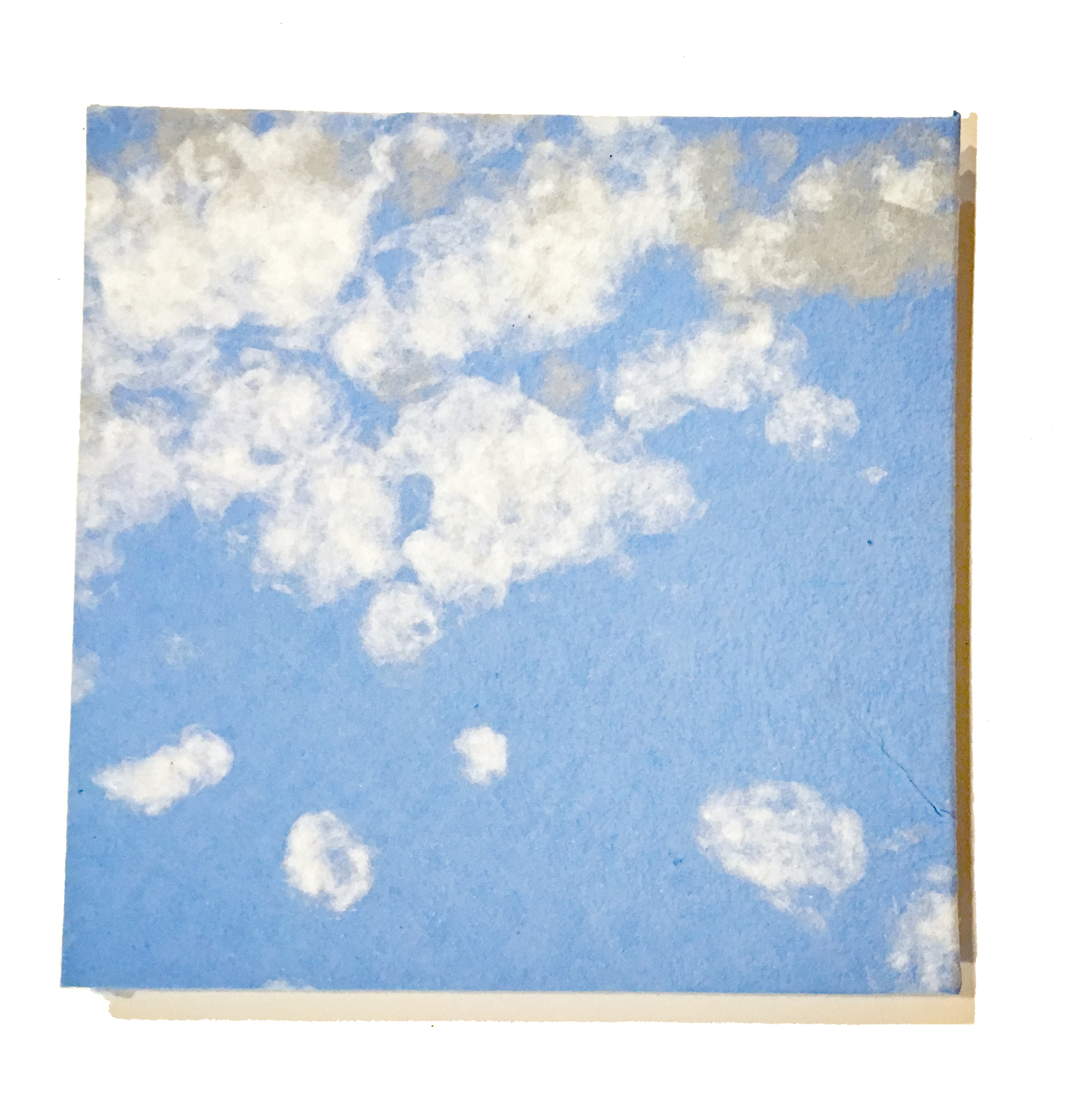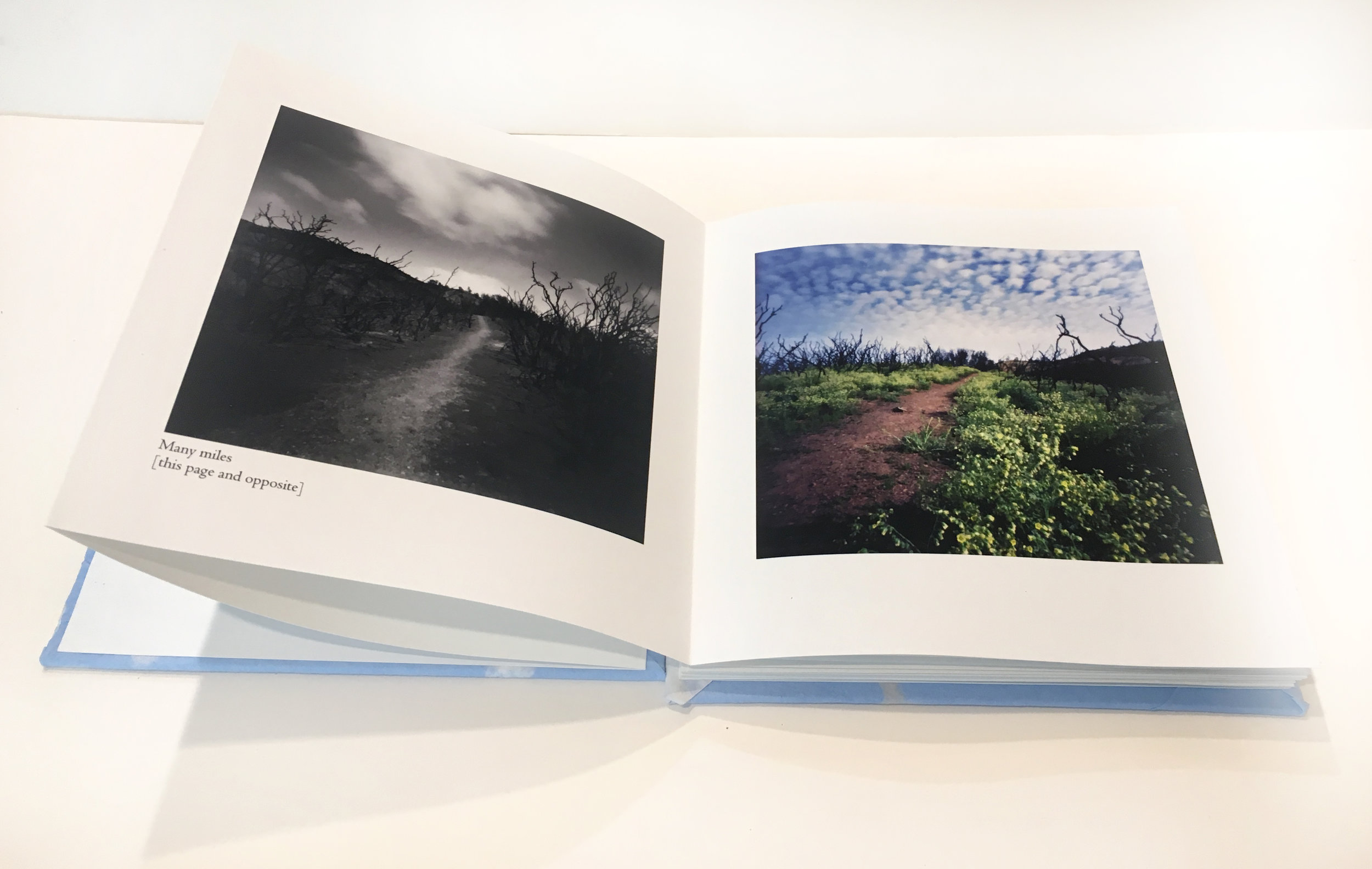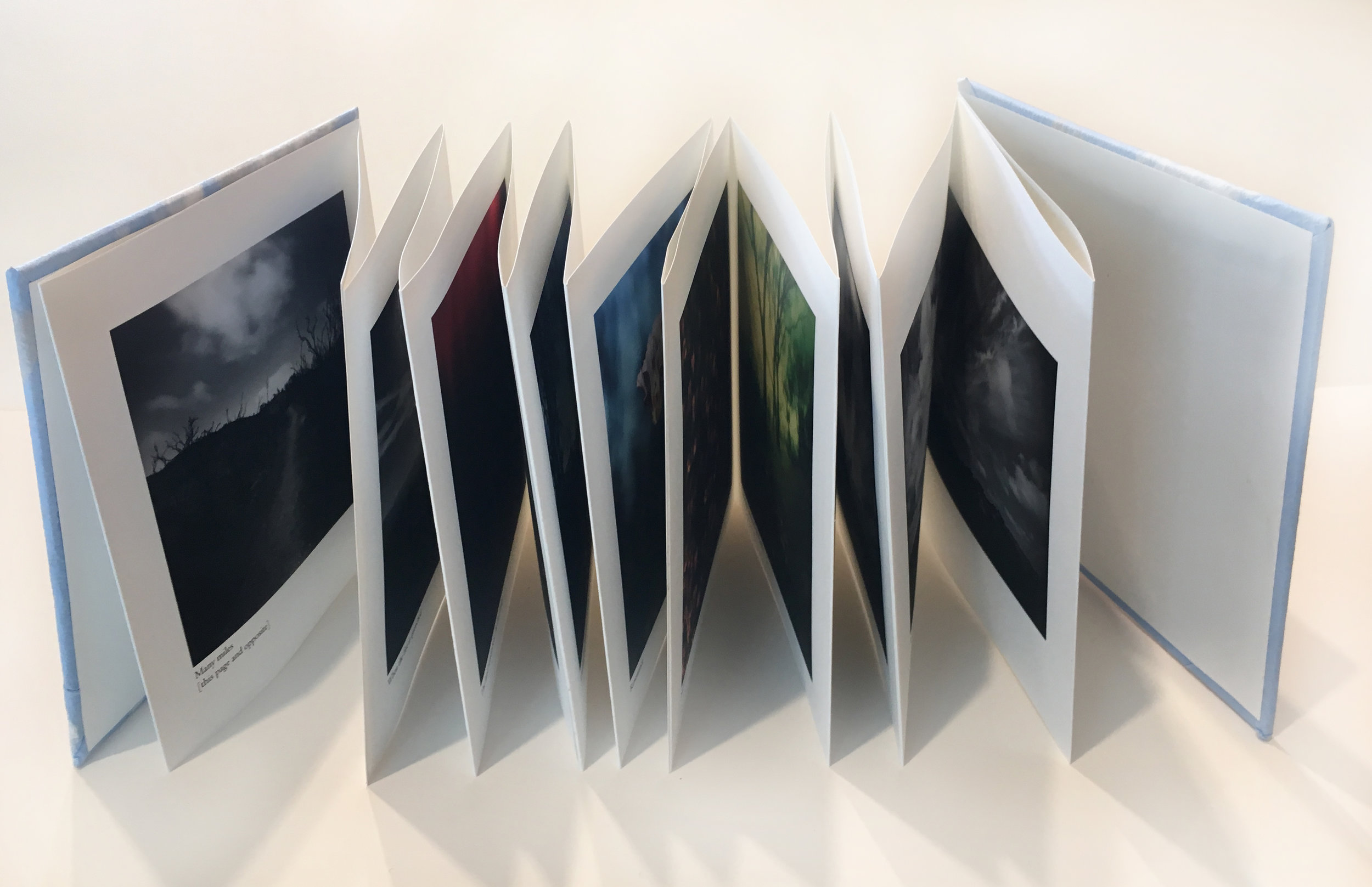About J. M. Golding
J. M. Golding is a photographic artist based in the San Francisco Bay area. She chooses plastic, pinhole, and vintage film cameras, and cameraless techniques, as her primary tools: plastic cameras such as the Holga for the playfulness and spontaneity they promote and their capacity to help create dreamlike images, pinhole cameras for their simplicity and their contemplative quality, vintage film cameras for the subjectivity of the images that are possible, and cameraless techniques for the pure magic of making images with light alone. J. M.’s work was described by documentary filmmaker, speaker, and podcaster Pam Uzzell as “photographic deep listening.” J. M.’s photographs have been shown internationally in numerous juried group exhibitions and she is the recipient of the 2013 Holga Inspire Award, Best of Show at Wanderlust (Dickerman Prints, 2017), the Lúz Gallery (Victoria) Curator’s Choice Award (2009), the First Juror’s Award at the Fantastic Film Show (LightBox Gallery, 2021), a Juror’s Choice Award at the 1st Annual Photography and Digital Art Exhibition (San Francisco Women Artists, 2022), and Honorable Mentions in other juried exhibitions.
J. M. Golding created and maintains 127 Film Photography, an online resource for community, inspiration, and information about 127-format film photography.
Interviews and portfolios
Interview on Art Heals All Wounds podcast
Interview in LensCulture magazine
Interview in F-Stop Magazine
Appearance on A Photographic Life podcast
Portfolio at the Center for Photographic Art
Portfolio at All About Photo
Portfolio at Mother F-Stop
Interview on Sunny 16 Podcast
Interview at Slices of Silence
Note
All images and text on this site are copyrighted, © J. M. Golding ALL RIGHTS RESERVED (except for the images of "Tales from a non-existent land", see below). They may not be used in any way, for any reason, without my written permission. To request permission, please contact me.
The images of "Tales from a non-existent land" are copyrighted, © Al Brydon and J. M. Golding ALL RIGHTS RESERVED. They may not be used in any way, for any reason, without Al Brydon's and my written permission. To request permission, please contact me.
About the work
My work explores the emotional and symbolic significance of the natural world as it reflects internal, subjective experience. Through the photograph, the world outside the person illuminates processes deep inside us that may not be readily accessible to awareness. I often see multilayered aspects of inner worlds in reflection, shadow, and multiple exposure.
Returning to the unimagined
This work began at a time of losses and betrayals, and became a way to move through them.
During this time, Diane Kaye bequeathed silver gelatin paper – the essential ingredient of lumen prints – to me. The paper was a gift of freedom to experiment, and, along with the inspiration I find in her magnificent lumen prints, a way to work with what I still had of her. Also during this time, an almost chance email conversation with Hélène Barrette led to a collaboration in which we experimented together with expanding the lumen print process, culminating in the book Playing with light / Jeu de Lumière.
Out of this playing together came the present project. As I made these lumen prints, I noticed a handful of visual themes emerging. These struck me as suggesting intertwining internal processes that were occurring as I struggled to find my way through a time of multiple disconnections, the visual themes seeming to shift as my internal processes did. While I was making these images, it was often difficult to envision being in connection again. Both final image and human connection were dimly glimpsed ahead of time, with their form, their full possibilities, and even, at times, their very existence, unimagined. With one exception, I’ve presented the photograms in the chronological order in which I made them, on the assumption that this reflects the messy, but very real, sequence in which my own process has unfolded.
Work from this project is available in book form.
The time of breathtaking vulnerability
The time of breathtaking vulnerability is always. It’s just that we don’t always think about it. Maybe you’re allowing someone to know you deeply. Maybe you’re losing, or have lost, someone close. Maybe you have a life-threatening illness, or you just notice the signs of your own aging. Maybe you’re aware of the very real threats to the planet and humanity, or the ways that life can change in an instant. In these images, there is both calm and fear, hope and uncertainty.
Lost connections
This series is a tribute to my friend, the artist Diane Kaye, made with Diana and Diana clone plastic cameras that she bequeathed to me. I feel Diane’s presence as I make this work, and our shared an experience of photographic image-making as an intuitive, alchemical process. In that sense, the work becomes a collaboration to which we both contribute. Each photograph seems to me to contain some elements of her vision as well as mine. Some of the images, such as “Portal” and “To return to the source,” remind me more of Diane’s work, whereas others, such as “Time becomes memory” and “We still had the sun,” resemble my other work more.
The maybe lakes
The maybe lakes uses the magic of photography to convert an arid land into reservoirs of resilience and hope. The imagery shifts perception from a stance of either/or to one of both/and. Although this is a series about bodies of water that may or may not exist, the ambiguity only begins there. Floating between worlds and/or finding a bridge between them … a thirst for connection and/or a flood of emotion … halves and/or a whole … unseen and/or reflected … isolation and/or resonance … ending and/or beginning ... How can we hold the multiple ways to experience each event and each moment, when all are real? These images reach toward a possible resolution.
Where you are
This series explores integration of closeness and distance using double exposure. The photographs contain elements of each of the two exposures, one focused close and one focused far away, fusing them to create an image that could not have been anticipated by either one alone. They join near and far, solid and ethereal, objective and subjective, sharp and blurred, literal and metaphorical, real and imagined.
Mandalas for the Blues
“If you offered me a shade of blue
would I return it saying that it was too
dark or light?
Or would I see it for the precious thing
that it might one day be?”
- Michael Timmins (Cowboy Junkies), “Hold On To Me”
In the tradition of Anna Atkins, this work consists of cyanotype photograms made from objects in nature – weeds, fallen leaves and blossoms, grasses, feathers, and the like. Unlike Atkins, I arranged the objects in the form of a mandala, or circle. According to C. G. Jung, "The mandala ... signifies the wholeness of the self." The mandala is also seen as a reminder of impermanence and the necessity of accepting change, and as a source of calm, comfort, and insight.
Mandalas for the Blues began at a time of loss and change. Given weeds’ resilience (as anyone who has tended a garden knows) and the beauty of many plants that are commonly considered weeds, to create a mandala from weeds is to create wholeness from unexpected beauty and unseen resilience. To form weeds and detritus into a mandala is to create wholeness from what is unwanted, yet available.
Shortly before beginning to make this work, I had participated in in a collaborative installation celebrating World Cyanotype Day (A Smith Gallery, Johnson City, TX). Gallerist Amanda Smith had invited artists to send one cyanotype on fabric, which she would combine into an installation inspired by Buddhist prayer flags. The piece I contributed included a circle made of small oak leaves, which felt to me as if it held a sense of wholeness. I expanded upon that design element to create Mandalas for the Blues.
A series within the series, Wholeness to Us All, alludes to Tibetan prayer flags, inspired by the format used in the WCD installation. By deteriorating from exposure to the elements, prayer flags, like mandala imagery, acknowledge impermanence. The Tibetan practice of adding new flags to old ones is a renewal of hope, a welcoming of change, and an acknowledgment that all is part of an ongoing cycle, consistent with the mandala’s circular form. In Tibetan tradition, the prayers and symbols on prayer flags are seen as being blown by the wind to spread compassion, peace, strength, and wisdom to all. The intention of Wholeness to Us All is to offer those qualities to everyone.
The unclear way forward
As 2020 began, circumstances in my life gave rise to a sense of uncertainty. I found myself reflecting that while we never know what a year might bring, sometimes we might feel more uncertain than usual. I didn’t know then how the coronavirus pandemic would upend our lives.
These photographs, made on daily walks within a few miles of my home (and occasionally in my backyard), reflect both the unclear path ahead in this time of personal and collective uncertainty, and a process of seeking resilience through discovering small signs of hope and light in a dark time. These discoveries come through open attention to the ordinary and often tiny forms of nature in my immediate surroundings. Perhaps the return of spring despite disaster, and the continuing cycle of seasons, can offer grounding and solace.
Transitional landscapes
These photographs contain transitions from outer landscape to inner, from objective landscape to subjective. They also embody the eye’s transitions across the scene, moving incrementally from one perspective to another. Square frames of film that are normally separate join together to form new, integrated images, wholes that are greater than the sum of their parts, transcending the literal separation of the component scenes. Because the multiple, overlapping exposures used to create these photographs are made sequentially, as compared to the single moment typically seen in photographs, the series of exposures portrays transitions in time from one moment to the next. Although the time and distance traversed are small, the transitions across them create surprising changes in what is visible.
Notes from the edge of nowhere
I suspect that sometimes we know things that we don't realize that we know - this shows up in emotion, even if not in conscious knowledge of facts or events.
This descent, prescient
Knowing, beyond consciousness,
That loss had begun.
Before there were words
These images address preverbal experience that is retained, perhaps in the unconscious, long after it has become possible, expected, and maybe even typical to relate to the world largely through words. The photographs speak of pure actuality, that moment before verbal labels rush in to change experience … of the moments between sleep and waking, dreams vanishing as the dreamer wakes … of matter coming into form, possibilities for transformation … of unwished wishes and unspoken memories … of moments seeking resonance, concepts in the process of forming, hopes and dreams being nurtured carefully and sent forth.
Tales from a non-existent land
A collaboration with UK-based artist Al Brydon. We each expose a roll of film in a plastic Holga camera, send it to the other, and re-expose it - not knowing what already present in the latent image. Using the random magic of two unconscious processes and two Holgas, we combine the Peak District with northern California in often unexpected ways, creating a land that will never exist ... and yet, manifestly exists in our photographs.
From destruction grows a garden of the soul
One autumn, fire ravaged over 3,000 acres of mountain wilderness in northern California. Photographs of the burn area show the bleakness and devastation that remained, a landscape of loss. There are subtle signs of hope, easy to miss, and perhaps requiring more interpretation than is justified. Seemingly against all odds, the following spring brought rare wildflowers to the area. Known as “fire followers,” these flowers only grow in the aftermath of an exceptionally hot fire, occurring perhaps once or twice in a person’s lifetime. Where there had been desolation, there was now joy – mirrored in this unique, if ephemeral beauty that could only come into existence because of destruction. I discuss this work with host Pam Uzzell on the Art Heals All Wounds podcast.
Fourteen photographs from From destruction grows a garden of the soul are available as a limited-edition, handmade, accordion-fold book.
A geography of connection and loss
These photographs are about the integration of loss, co-creation enduring in the overlap of images. The technique was inspired by Paul Romaniuk's series, That summer at the lake.




